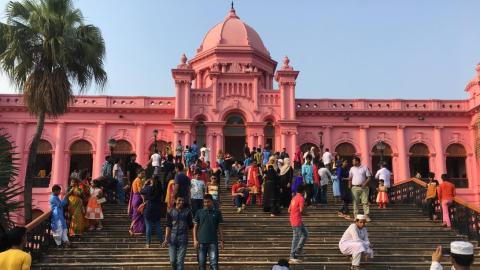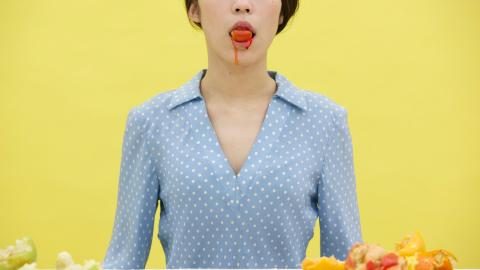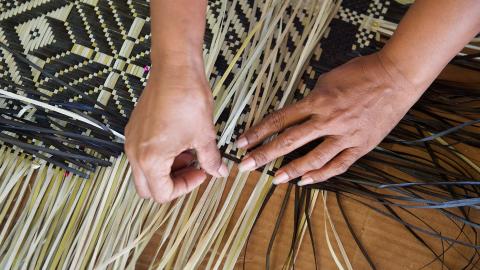Republic of the Marshall Islands
By Ruha Fifita
Artlines | 2-2018 | | Editor: Stephanie Kennard
If there is one quality that the people of the Marshall Islands share, it is resilience. At many times in the nation’s history, its citizens have endured calamities often brought about by forces beyond their control. As the far-reaching implications of nuclear testing, militarism, rising sea levels, forced migration, and economic adaptation continue to threaten the idyllic shores of this expanse of coral atolls, the spirit of the land and its people has characterised a powerful voice in global discourses, not least through the work of its local artists. With the support of the Oceanic Women’s Fund, QAGOMA’s Asia Pacific Curatorial Team undertook its first major Micronesian Project in September 2017. I travelled to the Marshall Islands to support the project and gain insight into the social and cultural realities of this unique place and people.
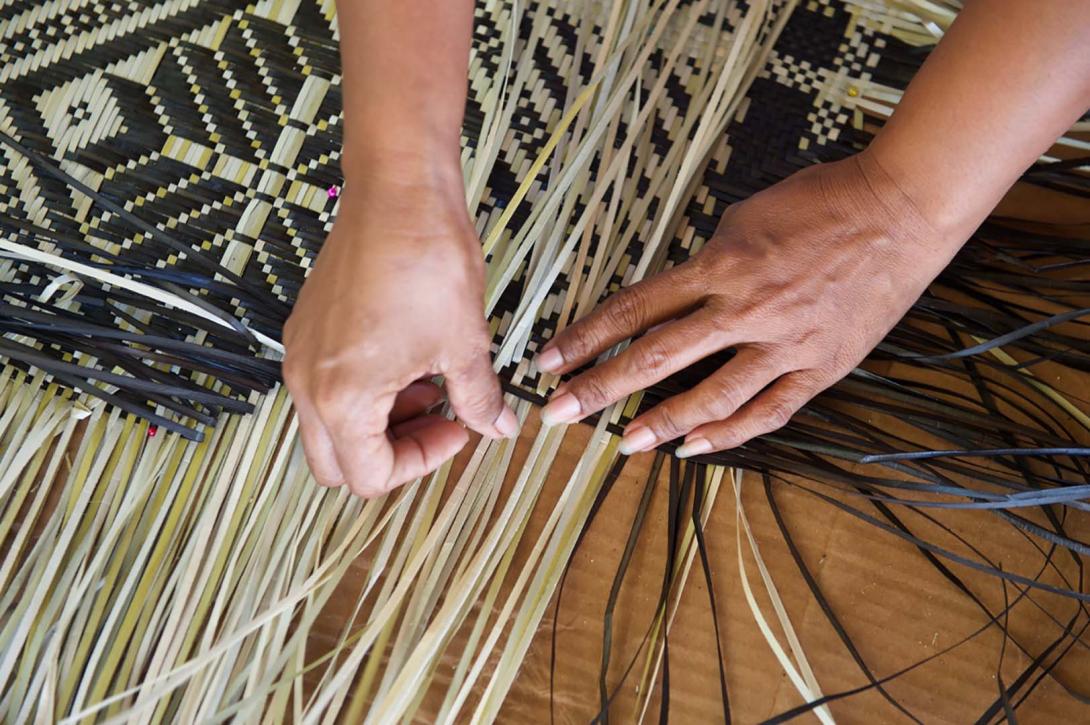
Jaki-ed weaving workshop, Majuro, Marshall Islands, September 2017 / The Jaki-ed project was developed in collaboration with the University of South Pacific, Majuro and supported by QAGOMA’s Oceania Women’s Fund, enabled by the generous bequest of Jennifer Phipps / Photograph: Christine Germano
The Marshall Islands are home to one of Oceania’s finest weaving techniques. Referred to as jaki-ed or nieded, these mats made from pandanus fibres were originally used as clothing. The method of weaving a jaki-ed, carried out solely by women, conforms to sacred cultural principles. Intricate geometric borders distinguish each mat as expressions of the weaver’s ancestry and a manifestation of the belief that, in this matrilineal society, women possess unique creative attributes. The practice of jaki-ed weaving almost disappeared when trade cloth was introduced to the island, but disruptions in shipments during World War Two prompted its revival. In 2013, a new apprenticeship program supported weavers to learn the art form within the traditional dynamic of a weaving circle where women could exchange cultural values and knowledge. To ensure the practice survives, a growing number of weavers and community leaders are committing themselves to advancing the quality and social relevance of jaki-ed weaving, both locally and internationally.
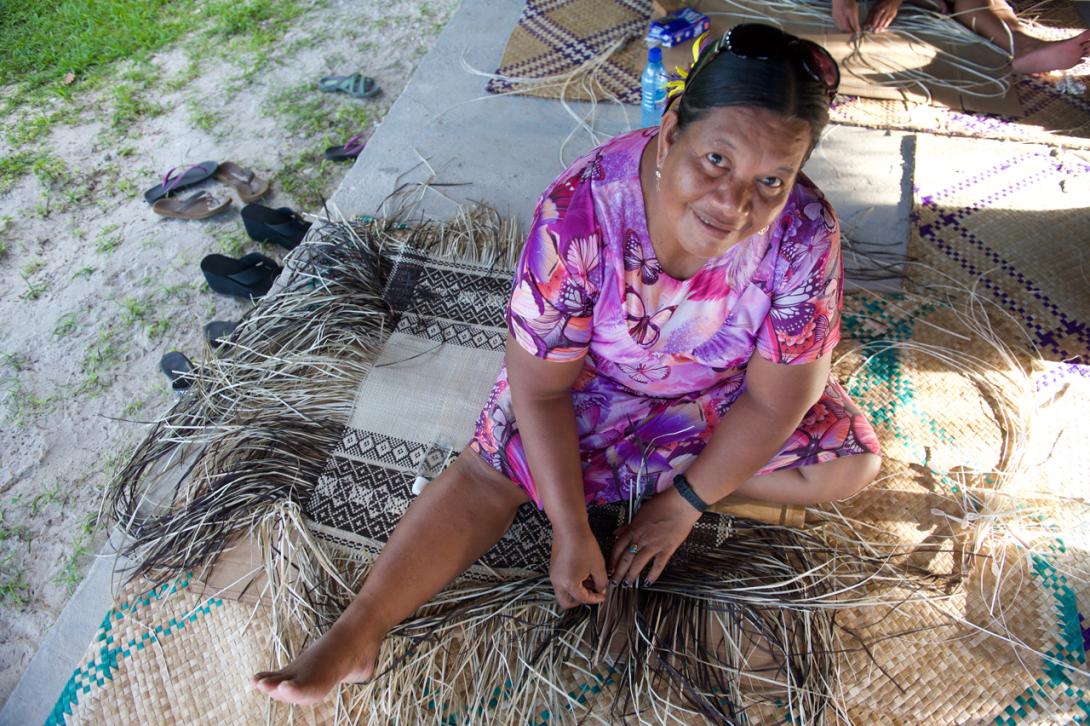
Jaki-ed weaving workshop, Majuro, Marshall Islands, September 2017 / The Jaki-ed project was developed in collaboration with the University of South Pacific, Majuro and supported by QAGOMA’s Oceania Women’s Fund, enabled by the generous bequest of Jennifer Phipps / Photograph: Christine Germano
The art of weaving has also been a source of inspiration for Marshallese spoken-word poet, Kathy Jetnil-Kijiner. In 2014, Kathy was chosen to address the UN Climate Change Summit in New York. Her carefully crafted and passionately delivered performance captured a personal perspective of a nation on the frontlines of the global battle against climate change. In partnership with the University of the South Pacific’s Majuro Campus, we coordinated a three-week weaving circle, which brought together Kathy and 13 expert jaki-ed weavers. The project enabled participants to exchange valuable knowledge and skills, collectively explore meaningful ideas, and create new works that will feature in APT9 and that highlight the resilience of this island nation.
Ruha Fifita is Research Assistant, Pacific Art.

Jaki-ed weaving workshop, Majuro, Republic of the Marshall Islands, September 2017. From back left corner: Susanta Jieta, Rosie Helmorey, Clantine Moladrik, Roselee Jibon, Moje Kelen, Kathy Jetnil-Kijiner, Susan Jieta, Terse Timothy & Mela Kattil, Aileen Sefiti, Motdrik Elisana Paul, Banitha Jesse, Artina Clarence, Helmera Fandino and Airine Keju / Photograph: Chewy Lin
